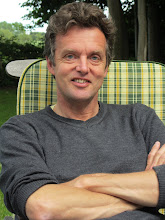GEOGRAPHICAL IMPRESSIONS
I firmly believe that maps influence us. The fact that north is "up", south is "down", for instance.
(T'was not ever thus; mediaeval maps had east at the top, since Jerusalem/the Holy Land was the most important place in Christendom, and that was to the east. Seen from Europe, of course ...)
I was reminded of this when reading this week's Economist. On page 27, there was a 7cm x 5,5cm map of Israel and Palestine together. The West Bank is only about 50-60km wide; from Tel Aviv to the West Bank is even less, perhaps 30km. The whole of the Gaza Strip, home to 1,5 million people, is only 360 sq km, roughly 30km x 10km. When you put the facts down like that, it is easy to imagine a conflict in the area, irrespective of the history of the Israeli state and its wars with its neighbours. When there is simply not that much land to go round, then every olive grove takes on an increased importance.
On the next page, there was a slightly smaller map, this time of Sudan and its neighbours in Africa. Sudan is the continent's largest country, all 2,5m sq km of it, so the area shown by the map was vast. The province of Darfur, much in the news of late, accounts for roughly a fifth of Sudan, and is almost as large as France. It is about 1,400 times the size of the West Bank, yet has only 4 times as many people. When you put the facts down like that, it becomes absurd to think that the U.N.'s peacekeeping force of 22,000 can make the region secure. After all, nobody would try to secure France with just 22,000 soldiers; and Darfur has almost no infrastructure to help them move around.
As citizens of relatively small, well-organised Western European countries, we find it difficult to appreciate on the one hand the vast size, and consequent logistical problems, of some countries (eg Russia); and on the other, the intense population pressures in parts of the world (eg Bangladesh's 150million people crowded into an area about the same size as Ireland). It is true that all maps - including the Economist's - have a scale factor in the corner. But how many of us really look at that, particularly if it's on a TV screen? Perhaps we should.
Walter Blotscher
Tuesday, 17 August 2010
Subscribe to:
Post Comments (Atom)

No comments:
Post a Comment